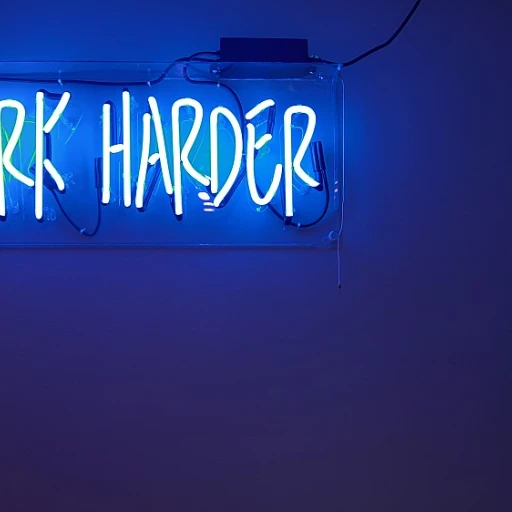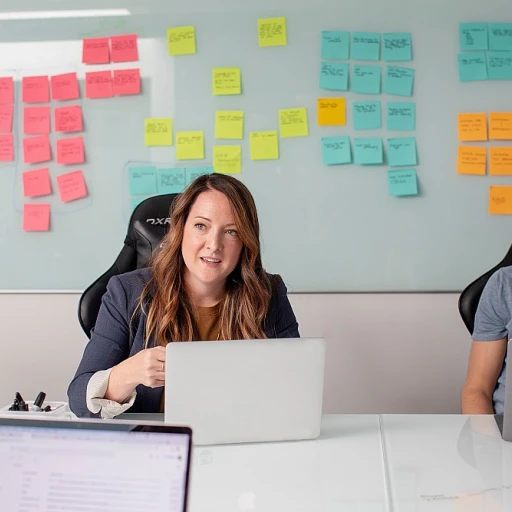Understanding the Remote Hiring Process
Decoding the Remote Recruitment Journey
As businesses and organizations around the globe adapt to new ways of working, understanding the nuances of hiring remotely becomes essential. Unlike traditional hiring processes, remote recruitment offers unique challenges and opportunities that require a keen understanding and a strategic approach.
In the context of remote work, defining your hiring strategy is crucial. It involves recognizing the specific needs of a remote workforce and identifying the skills and qualities that align with your organization's goals. It's not just about finding candidates who meet the technical requirements; it's also about identifying individuals who can thrive in a remote setup, self-motivating themselves and communicating effectively within a digital landscape.
A significant component of the remote recruitment process is clarity and transparency. Clearly articulated communication from the outset can set the right expectations for candidates and provide a structured pathway through the hiring funnel. This includes crafting detailed job descriptions that reflect not only the roles and responsibilities but also highlight the remote nature of the position and any specific remote working arrangements.
One key aspect of understanding remote hiring is recognizing the vital role of technology. Tools and platforms now enable remote interviews and assessments that were previously conducted face-to-face, offering more accessibility and flexibility in evaluating potential hires. Leveraging these digital resources efficiently can streamline your hiring process and improve the candidate experience. For more insights, you might find it helpful to explore
enhancing the digital hiring experience, which delves into how digital tools can optimize recruitment practices.
Ultimately, by fully embracing the intricacies of remote hiring, organizations can tap into a vast pool of talent, unrestricted by geographical boundaries, and build a resilient and dynamic workforce primed for future growth.
Crafting the Perfect Remote Job Description
Designing an Irresistible Job Listing for Remote Roles
When it comes to remote hiring, drafting a compelling and accurate job description is vital. Given the lack of physical proximity, candidates rely heavily on the job description to gauge their interest and fit for the position. A well-crafted job listing serves as the first point of contact and sets the tone for the rest of the hiring process.
Start by defining the role clearly. Outline specific responsibilities, required skills, and competencies expected from the potential hire. Avoid vague language, focusing instead on concise and specific descriptions. This not only helps attract the right candidates but also saves time for hiring managers by reducing the number of unsuitable applications.
Transparency regarding company culture and expectations for remote work is equally essential. Since candidates won’t experience the traditional office environment, providing insights into how your organization supports remote employees can be an attractive draw. Detail any support systems, tools, and resources available to help remote employees succeed.
Include information about how performance will be evaluated. In a remote setting, clarity on metrics and evaluation processes is paramount. This reassures candidates that effective work will be recognized and rewarded.
Moreover, ensure your job description is inclusive. Use gender-neutral language and ensure you’re not listing unnecessary requirements that might unconsciously deter qualified applicants from applying. An inclusive job description widens the talent pool and fosters diversity within your team.
An impressive job description is a critical component of the remote hiring experience. For more insights on how to boost your hiring strategies effectively,
explore this guide.
Conducting Effective Remote Interviews
Preparation is Key
Before diving into the interview process for remote hiring, preparation is crucial. Just as with traditional interviews, understanding the core competencies and skills required for the position is essential. However, you must also factor in the specific needs and challenges of remote work. This involves reviewing each candidate’s ability to work independently, their communication skills, and their comfort with digital tools. Crafting a set of well-thought-out questions that address both the technical aspects of the job and the dynamics of remote work will help you identify the most suitable candidates.
Setting the Scene Virtually
Conducting effective interviews in a remote setting requires attention to detail and a strategic approach to technology. It's important to ensure that the virtual platform you choose is reliable and that you, as an interviewer, are comfortable navigating it. Before the interview, test the platform to avoid technical glitches, and ensure you have a backup plan, such as a phone call, should issues arise. This preparation not only alleviates stress for you but also creates a more professional and seamless experience for the candidate.
Mastering Communication
Successful remote interviews hinge on the ability to communicate clearly and effectively. In a virtual environment, non-verbal cues are often limited, so ensuring that your verbal communication is concise and engaging is vital. This is where mastering communication in the hiring process becomes a key factor. Employ active listening techniques and encourage candidates to articulate their thoughts. Pauses can feel more pronounced in virtual discussions, but using them to your advantage can lead to deeper insights into a candidate’s responses and assess their ability to convey ideas without relying on physical presence.
The Role of Technology
Finally, leverage technology not only to facilitate the interview process but to enhance it. Use collaborative tools and platforms that mimic in-person interactions as closely as possible. Video conferencing tools allow for face-to-face interactions, while screen sharing and virtual whiteboards can be used to assess problem-solving skills or showcase team collaboration potential. Being technology-fluent in your remote interviews speaks volumes about your organization’s adaptation to modern hiring practices and can significantly improve the candidate's journey.
By following these strategies, you can ensure that remote interviews are as effective and insightful as possible, paving the way for enhanced candidate experiences and successful remote hires. For a deeper understanding of mastering communication in the digital age, explore our comprehensive guide on
mastering communication in the hiring process.
Enhancing the Candidate Experience
Creating a Positive Candidate Journey
In the realm of remote hiring, ensuring a positive candidate experience is paramount. This begins with clear communication from the outset, which sets the tone for the entire process. Candidates should be informed about what to expect at each stage, including timelines and any technical requirements for remote interviews. Transparency in communication helps build trust and reduces anxiety, making candidates feel valued and respected.
Personalization and Engagement
Personalizing interactions can significantly enhance the candidate's journey. Simple gestures, such as addressing candidates by their names in emails and tailoring interview questions to their specific experiences, can make a big difference. Engaging candidates through personalized communication not only makes them feel appreciated but also helps in assessing cultural fit, which is crucial when building a strong remote team.
Feedback and Follow-Up
Providing timely feedback is another critical component of a positive candidate experience. Whether a candidate is successful or not, offering constructive feedback shows that your organization values their time and effort. It also leaves a lasting impression, which can influence their perception of your company and their willingness to reapply in the future. Consistent follow-up, even after the hiring process, helps maintain a connection and can be beneficial for future opportunities.
Streamlining the Process
Efficiency in the hiring process is crucial for both candidates and employers. Utilizing technology to streamline tasks, such as scheduling interviews and managing documents, can greatly improve the candidate's experience. This not only makes the process smoother but also reflects positively on the company's image, showcasing its commitment to innovation and efficiency.
By focusing on these aspects, organizations can create a seamless and enjoyable remote hiring experience that attracts top talent and fosters long-term relationships.
Building a Strong Remote Team
Fostering Collaboration and Trust Remotely
Building a strong remote team requires more than hiring qualified candidates; it’s about fostering a culture of collaboration and trust within a virtual workspace. This foundation is crucial for team cohesion and productivity. Organizations must prioritize open communication channels, utilizing tools like Slack or Microsoft Teams to keep team members connected. Regular virtual meetings and check-ins contribute to maintaining a sense of community and alignment on projects.
Mentorship programs also play a critical role in cultivating team strength. By pairing new hires with seasoned team members, organizations can ensure knowledge transfer and create a support system that encourages growth. Celebrating achievements, both big and small, further fortifies team spirit by acknowledging individual contributions within the team context.
Another essential aspect is setting clear expectations for roles and responsibilities. By discussing expectations early on, companies can avoid miscommunications and ensure that everyone is working towards common goals. Establishing measurable objectives and key results helps in tracking progress and maintaining transparency across the board.
In addition, inclusivity should be a cornerstone of your remote team-building efforts, welcoming diverse perspectives and backgrounds. This not only enhances creativity and problem-solving but also creates an environment where every team member feels valued and respected. Engaging in activities that promote team bonding, such as virtual social events, can further amplify the sense of community.
Remember, a strong remote team is the backbone of successful remote hiring processes and ongoing business operations. With intention and effort, organizations can build cohesive teams that thrive despite geographical barriers.
Leveraging Technology in Remote Hiring
Embracing Digital Tools for a Smooth Hiring Journey
In the realm of remote hiring, technology is not just a facilitator; it is an invaluable ally. The digital tools available today can streamline every facet of the hiring process, making it more efficient and effective. When leveraged correctly, these tools can significantly enhance communication, collaboration, and ultimately, the decision-making process.
One of the fundamental ways technology bolsters remote hiring is by providing platforms that enable seamless communication. Video conferencing tools, for instance, have transformed the way interviews are conducted. They offer a rich interaction experience that closely mimics in-person interviews, allowing both parties to assess mutual compatibility. By combining these tools with scheduling software, recruiters and candidates can easily find suitable times to meet, minimizing back-and-forth communications and potential misunderstandings.
Collaboration tools also play a crucial role. With platforms that support shared documents and virtual workspaces, hiring managers and teams can collaboratively review resumes, interview notes, and candidate feedback in real-time. This facilitates a more comprehensive evaluation of each candidate, ensuring that important details are not lost in the process.
Additionally, applicant tracking systems (ATS) are invaluable in managing the candidate pool and maintaining organized records of each applicant's journey through the process. These systems automate various tasks, from sending confirmation emails to updating candidate statuses, freeing up recruiters' time to focus on more strategic aspects like crafting job descriptions that align with the company's vision and culture.
Finally, data analytics and artificial intelligence are becoming increasingly vital in remote hiring. They can provide insights into candidate sourcing, identify patterns of successful hires, and even predict a candidate's potential performance based on historical data. This data-driven approach enables organizations to make better-informed decisions, ultimately leading to a more robust remote team.
In previous sections, we explored the importance of understanding the remote hiring process thoroughly and crafting meticulous job descriptions. Applying technology at each stage complements these efforts, ensuring a hiring experience that is seamless, efficient, and mutually rewarding for both employers and candidates alike. Embracing these tools is not just a competitive advantage but a necessary evolution in the art of remote hiring.














